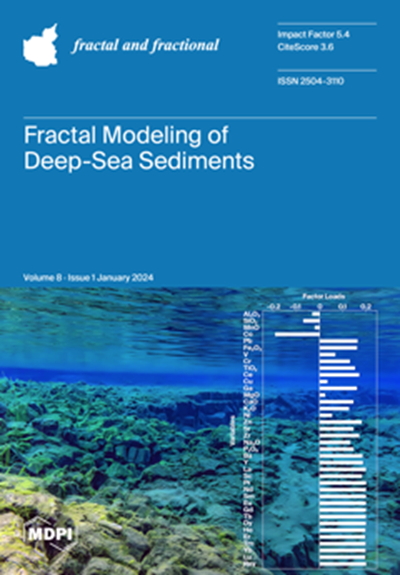Fractional Criticality Theory and Its Application in Seismology
IF 3.3
2区 数学
Q1 MATHEMATICS, INTERDISCIPLINARY APPLICATIONS
引用次数: 0
Abstract
To understand how the temporal non-locality («memory») properties of a process affect its critical regimes, the power-law compound and time-fractional Poisson process is presented as a universal hereditary model of criticality. Seismicity is considered as an application of the theory of criticality. On the basis of the proposed hereditarian criticality model, the critical regimes of seismicity are investigated. It is shown that the seismic process has the property of «memory» (non-locality over time) and statistical time-dependence of events. With a decrease in the fractional exponent of the Poisson process, the relaxation slows down, which can be associated with the hardening of the medium and the accumulation of elastic energy. Delayed relaxation is accompanied by an abnormal increase in fluctuations, which is caused by the non-local correlations of random events over time. According to the found criticality indices, the seismic process is in subcritical regimes for the zero and first moments and in supercritical regimes for the second statistical moment of events’ reoccurrence frequencies distribution. The supercritical regimes indicate the instability of the deformation changes that can go into a non-stationary regime of a seismic process.分数临界理论及其在地震学中的应用
为了了解过程的时间非位置性("记忆")特性如何影响其临界状态,提出了幂律复合和时间分数泊松过程作为临界性的通用遗传模型。地震被视为临界理论的一种应用。根据所提出的遗传临界模型,研究了地震的临界体制。研究表明,地震过程具有 "记忆 "特性(时间上的非位置性)和事件的统计时间依赖性。随着泊松过程分数指数的减小,松弛速度减慢,这可能与介质的硬化和弹性能量的积累有关。延迟松弛伴随着波动的异常增加,这是由随机事件随时间变化的非局部相关性引起的。根据所发现的临界指数,地震过程的零时刻和第一时刻处于亚临界状态,事件重现频率分布的第二统计时刻处于超临界状态。超临界状态表明变形变化的不稳定性,可进入地震过程的非稳态状态。
本文章由计算机程序翻译,如有差异,请以英文原文为准。
求助全文
约1分钟内获得全文
求助全文
来源期刊

Fractal and Fractional
MATHEMATICS, INTERDISCIPLINARY APPLICATIONS-
CiteScore
4.60
自引率
18.50%
发文量
632
审稿时长
11 weeks
期刊介绍:
Fractal and Fractional is an international, scientific, peer-reviewed, open access journal that focuses on the study of fractals and fractional calculus, as well as their applications across various fields of science and engineering. It is published monthly online by MDPI and offers a cutting-edge platform for research papers, reviews, and short notes in this specialized area. The journal, identified by ISSN 2504-3110, encourages scientists to submit their experimental and theoretical findings in great detail, with no limits on the length of manuscripts to ensure reproducibility. A key objective is to facilitate the publication of detailed research, including experimental procedures and calculations. "Fractal and Fractional" also stands out for its unique offerings: it warmly welcomes manuscripts related to research proposals and innovative ideas, and allows for the deposition of electronic files containing detailed calculations and experimental protocols as supplementary material.
 求助内容:
求助内容: 应助结果提醒方式:
应助结果提醒方式:


